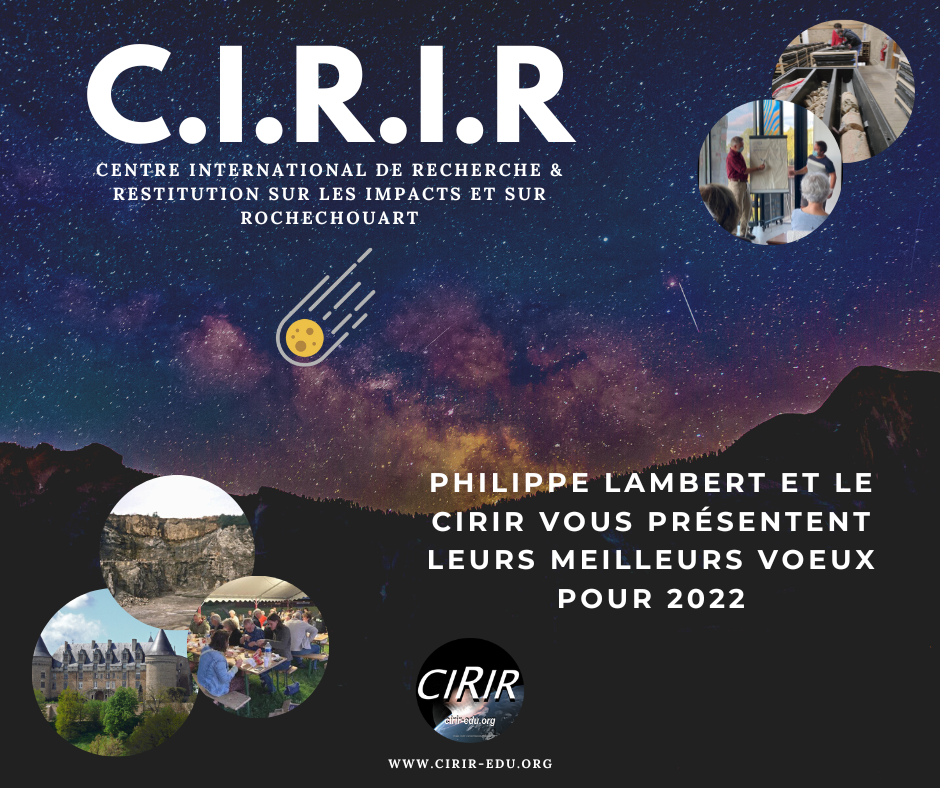On August 28, the Archaeological Park of Cassinomagus opened its doors to an unusual event, a friendly meeting in two stages of sharing and exchange between 5 international scientists and the general public about recent developments in research concerning the Impact of meteorite that disrupted the local landscape 200 million years ago.
It was a first that brought together residents, mayors, elected officials and territorial representatives from both sides of the administrative “border” between Haute Vienne and Charente, who came in large numbers to meet specialists in this unique phenomenon which gives unique value to their territory.
In the introduction, Fabien Habrias, local elected representative and president of CIRIR, recalled the context of this event. It is part of the “general public” work of the CIRIR, an associative structure unique in France in terms of its purpose and its operation. Conceived and directed by Philippe Lambert, supported by local authorities, the CIRIR brings together and coordinates projects and initiatives dedicated to the promotion in the broadest sense of the unique heritage that constitutes our national impact. As Philippe Lambert reminds us, this mission is for the benefit of the global scientific community as well as that of the public and territories, locally, nationally and internationally. This evening is an illustration of this. The speakers such as the Archaeological Park which received, are all associated with the CIRIR and involved in this adventure, as well as the public who came in large numbers for the occasion.

First, Philippe Lambert presented his CIRIR colleagues and the reason for their visit to the site, namely a mini scientific congress on the same theme as that of the evening. This is to shed light on the circumstances of the collision of the asteroid, in particular the question of the geographical environment of the places.
The recent campaign of scientific drilling of the site indeed calls into question the ideas that we have had so far, both about this environment and about the age and size of the crater. Jens Ormö, director of research at the Madrid Astrobiology Center presented the arguments which suggest that the impact of the asteroid occurred not on earth but under a substantial thickness of water, at least 200 m… knew from the publications of Philippe Lambert that the impact had been able to mobilize the sea by a “littoral” implantation, on Earth but by the sea. There it would seem that we are totally under the sea. reconcilable with the paleoenvironment data for the presumed time of the impact, what Sylvie Bourquin, research director at the CNRS and Jean-Baptiste Cherfils, doctoral student in the “Paleoenvironment” team at the University of Rennes tell us directed by Sylvie Bourquin. They also talked about the great climatic changes that the Earth experienced at the time of the impact, which, in many respects, resemble those that our planet is experiencing today.
After the presentations and the discussion in the room, all the participants were invited to remove their picnic basket and meet under the marquee installed below in the park, where tables awaited them, as well as posters installed by the researchers, which allowed discussions and exchanges between the experts and the public to continue until around 11 p.m.
Undoubtedly a successful “experience” that this evening of exchange with the public, an experience that the CIRIR plans to renew regularly on other themes at Cassinimagus and in a variety of places on the territory of the astrobleme, thanks to the visits and events that it organizes as part of its activities.





